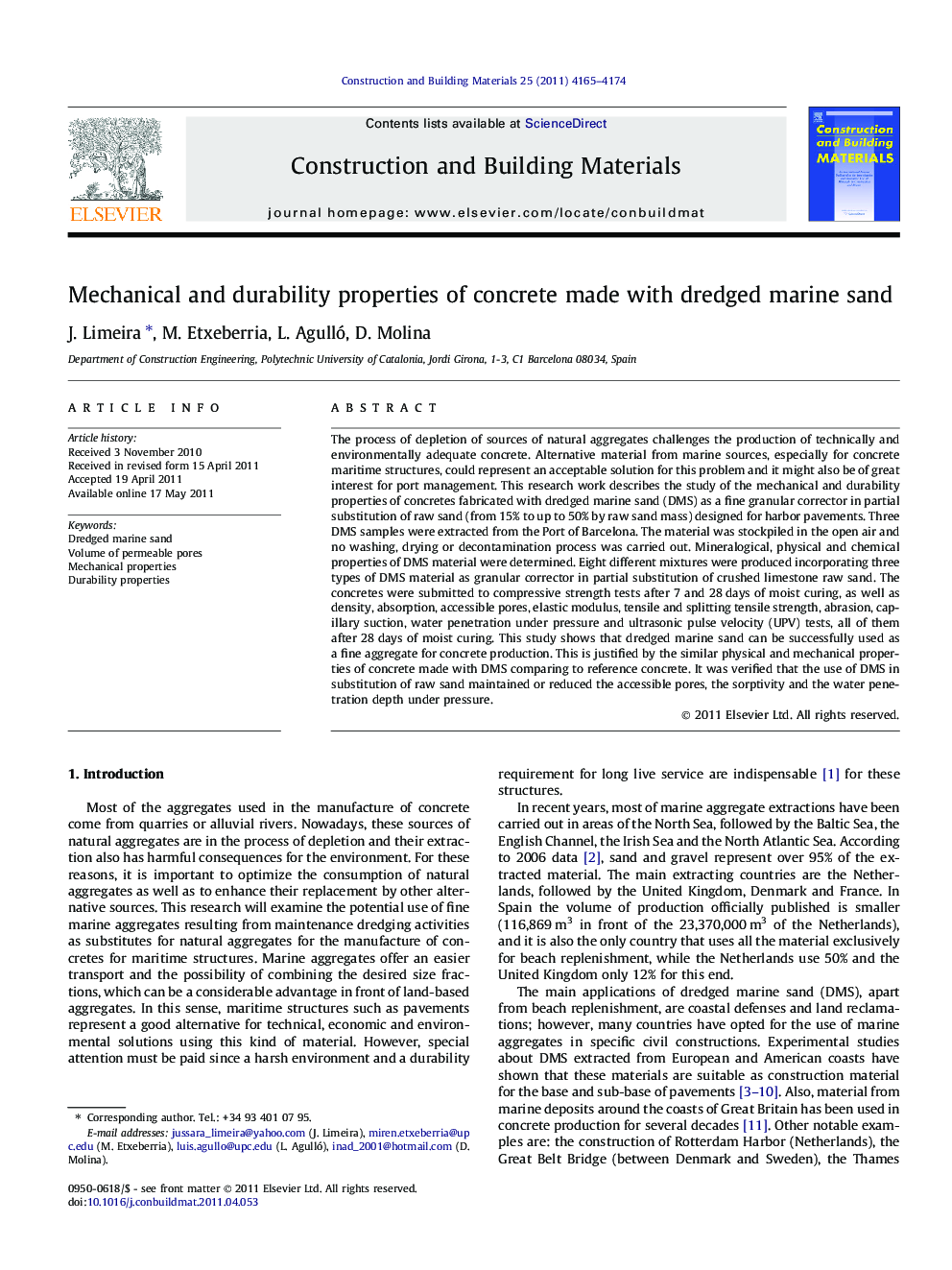| Article ID | Journal | Published Year | Pages | File Type |
|---|---|---|---|---|
| 259451 | Construction and Building Materials | 2011 | 10 Pages |
The process of depletion of sources of natural aggregates challenges the production of technically and environmentally adequate concrete. Alternative material from marine sources, especially for concrete maritime structures, could represent an acceptable solution for this problem and it might also be of great interest for port management. This research work describes the study of the mechanical and durability properties of concretes fabricated with dredged marine sand (DMS) as a fine granular corrector in partial substitution of raw sand (from 15% to up to 50% by raw sand mass) designed for harbor pavements. Three DMS samples were extracted from the Port of Barcelona. The material was stockpiled in the open air and no washing, drying or decontamination process was carried out. Mineralogical, physical and chemical properties of DMS material were determined. Eight different mixtures were produced incorporating three types of DMS material as granular corrector in partial substitution of crushed limestone raw sand. The concretes were submitted to compressive strength tests after 7 and 28 days of moist curing, as well as density, absorption, accessible pores, elastic modulus, tensile and splitting tensile strength, abrasion, capillary suction, water penetration under pressure and ultrasonic pulse velocity (UPV) tests, all of them after 28 days of moist curing. This study shows that dredged marine sand can be successfully used as a fine aggregate for concrete production. This is justified by the similar physical and mechanical properties of concrete made with DMS comparing to reference concrete. It was verified that the use of DMS in substitution of raw sand maintained or reduced the accessible pores, the sorptivity and the water penetration depth under pressure.
► The present work highlights the potential use of fine marine aggregates for the manufacture of concretes. ► It also motivates the discussion of its beneficial use in concrete for maritime structures. ► Studies carried out revealed that it yields final properties compatible with design requirements for mass concrete subjected to marine environment.
